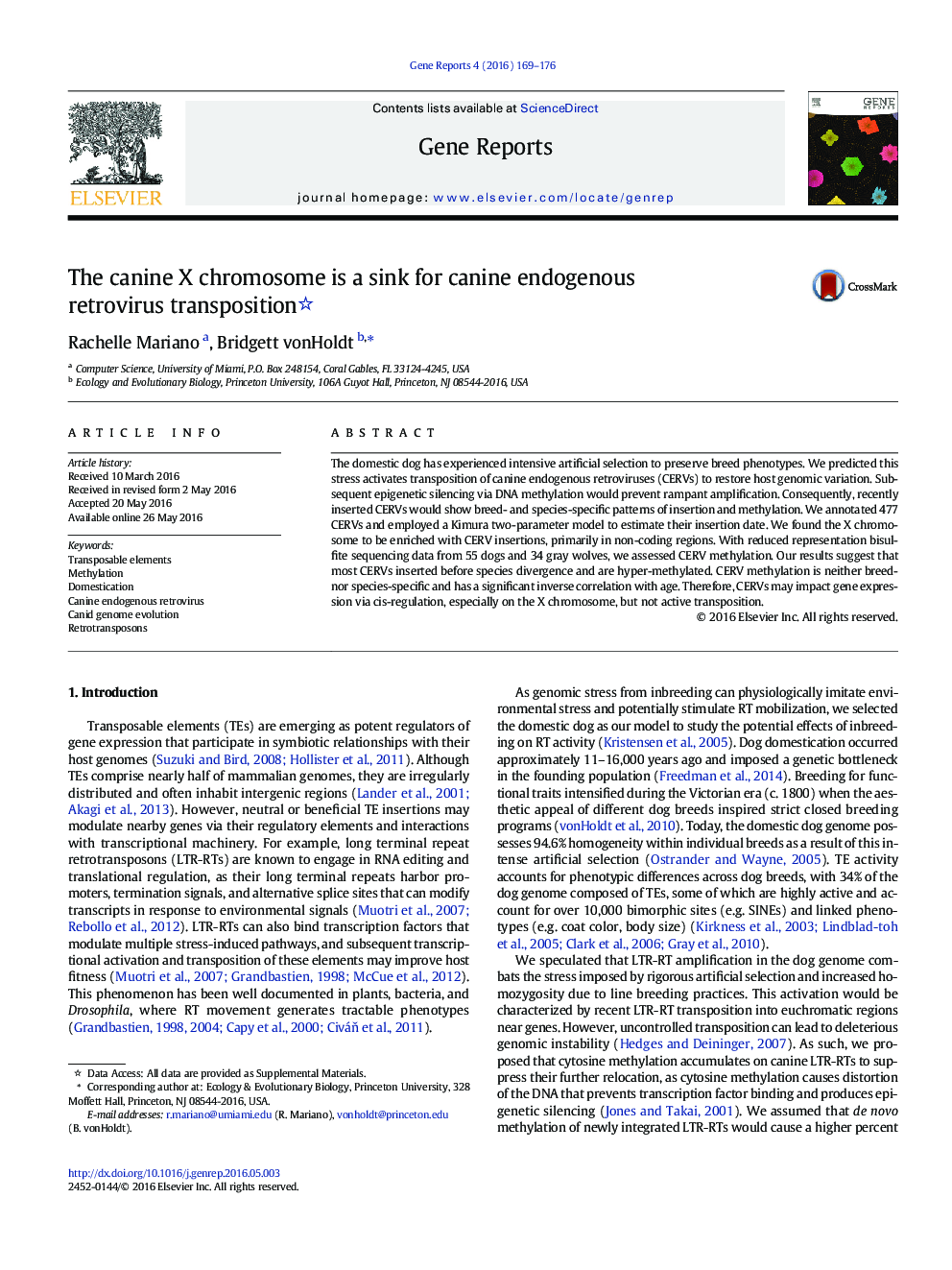| Article ID | Journal | Published Year | Pages | File Type |
|---|---|---|---|---|
| 2820496 | Gene Reports | 2016 | 8 Pages |
•Canine endogenous retroviruses (CERVs) predicted in silico predominantly reside on the X chromosome•CERV candidates in or upstream of 45 genes may impact canid gene expression•Most CERV insertions occurred before wolf/dog divergence, hinting SINEs are more active in shaping dog genome evolution•CERV methylation is neither breed- nor species-specific and has a significant inverse correlation with age
The domestic dog has experienced intensive artificial selection to preserve breed phenotypes. We predicted this stress activates transposition of canine endogenous retroviruses (CERVs) to restore host genomic variation. Subsequent epigenetic silencing via DNA methylation would prevent rampant amplification. Consequently, recently inserted CERVs would show breed- and species-specific patterns of insertion and methylation. We annotated 477 CERVs and employed a Kimura two-parameter model to estimate their insertion date. We found the X chromosome to be enriched with CERV insertions, primarily in non-coding regions. With reduced representation bisulfite sequencing data from 55 dogs and 34 gray wolves, we assessed CERV methylation. Our results suggest that most CERVs inserted before species divergence and are hyper-methylated. CERV methylation is neither breed- nor species-specific and has a significant inverse correlation with age. Therefore, CERVs may impact gene expression via cis-regulation, especially on the X chromosome, but not active transposition.
